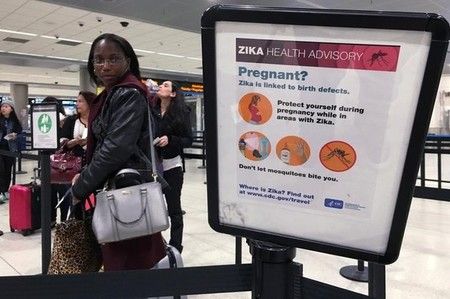Advertisement
Use it or lose it: Occasional Ohio voters may be shut out in November

By Andy Sullivan and Grant Smith
CINCINNATI (Reuters) – When Larry Harmon tried to vote on a marijuana initiative in November in his hometown of Kent, Ohio, the 59-year-old software engineer found his name had been struck from the voter rolls.
Two hours south in Zanesville, restaurant worker Chris Conrad, 37, was also told he was no longer registered.
Both men later found out why: they had not voted often enough.
As the Nov. 8 elections loom, officials in Ohio have removed tens of thousands of voters from registration lists because they have not cast a ballot since 2008.
All U.S. states periodically cleanse their voter rolls, but only a handful remove voters simply because they don’t vote on a regular basis. And nowhere could the practice have a greater potential impact in the state-by-state battle for the White House than Ohio, a swing state that has backed the winner in every presidential election since 1960.
Voters of all stripes in Ohio are affected, but the policy appears to be helping Republicans in the state’s largest metropolitan areas, according to a Reuters survey of voter lists. In the state’s three largest counties that include Cleveland, Cincinnati and Columbus, voters have been struck from the rolls in Democratic-leaning neighborhoods at roughly twice the rate as in Republican neighborhoods.
That’s because residents of relatively affluent Republican-leaning neighborhoods are more likely to vote in both congressional elections and presidential contests, historical turnouts show. Democrats are less likely to vote in mid-term elections and thus are more at risk of falling off the rolls.
In the three biggest counties, at least 144,000 voters have been removed, the Reuters analysis found. The statewide total is unclear. Each of the state’s 88 counties manages its own voter rolls, which generally are not made public.
Unlike other voting-rights disputes that have sparked protests and lawsuits, the practice doesn’t appear to be driven by one specific party. Both Republican and Democratic officials in Ohio have purged inactive voters over the past 20 years.
But neighborhoods that have a high proportion of poor, African-American residents are hit hardest, the Reuters analysis found.
“It’s absolutely unfair,” said Donna Porter-Jones, an organizer at Amos Project, an interfaith group that aims to register 30,000 voters from some of Cincinnati’s poorest neighborhoods ahead of November.
CLEANING UP THE ROLLS
Ohio Secretary of State Jon Husted, a Republican, says canceling registrations for voters who missed three straight federal elections helps keep voting rolls current. Since 2011, the state has cleared out more than 2 million records of people who have moved or died, he said.
Those who don’t vote over a six-year stretch or respond to a postcard mailed to their address have only themselves to blame, he said. “If this is really important thing to you in your life, voting, you probably would have done so within a six-year period,” he said in an interview.
People who don’t respond to the postcard can be removed from voting lists if they sit out the next two federal elections. Many other states only remove voters from the rolls if they have died or moved to a new address.
“You shouldn’t be struck of your right to vote because you skipped an election,” said Kathleen Clyde, a Democratic state representative who has been fighting the practice.
Four civil liberties groups sued to end the practice last month, arguing that it violates federal law and unfairly targets low-income and minority voters.
Voting-rights advocates say they are concerned that many infrequent voters who helped drive turnout to a record in the 2008 presidential election won’t be able to vote in this year’s likely matchup between Democrat Hillary Clinton, vying to become the first female president, and Republican Donald Trump, the celebrity billionaire.
PARTISAN BATTLES
The Ohio lawsuit is one of a number being fought across the country. Photo ID requirements and other efforts to tighten voting laws have spurred fierce partisan battles and protests in recent months. They follow a Supreme Court decision in 2013 that struck down parts of the Voting Rights Act, a signature achievement of the civil rights movement in the 1960s.
The Ohio dispute, by contrast, centers on a practice that has been in place for decades but is receiving new attention from civil liberties groups and Democrats ahead of November.
“We are pleased the courts are reviewing the state’s actions,” said Pratt Wiley, national director of voter expansion at the Democratic Party in Washington.
Republican party officials at the local and national level, as well as the Trump campaign, did not respond to requests for comment.
But Tom Fitton, the head of Judicial Watch, a conservative group that has pushed Ohio and other states to keep their voting lists up to date, described the lawsuit as a “power play” by civil liberties groups “to ensure that candidates they like are able to steal elections if necessary.”
Federal law prohibits states from removing voters solely because they haven’t voted, but it also requires them to keep voter lists up to date. Ohio residents who are removed from voting lists must re-register at least 30 days before an election.
Harmon, the software engineer, backed President Barack Obama in 2008 but has sat out presidential and congressional elections since then. He says he initially thought he had done something wrong to get kicked off the voting rolls.
“I felt embarrassed and stupid at the time,” said Harmon, who is involved in the Ohio lawsuit. “The more I think about it, the madder I am,” he said.
“KICKED OFF”
In Cleveland’s Cuyahoga County, 5 percent of voters in neighborhoods that backed Obama by more than 60 percent in 2012 were purged last year due to inactivity, according to the Reuters analysis of the voter lists. In neighborhoods where Obama got less than 40 percent of the vote, 2.5 percent of registered voters were removed for that reason.
In Franklin County, home to the state capital Columbus, 11 percent of voters in Democratic-leaning neighborhoods have been purged since 2012 due to inactivity. Only 6 percent of voters in Republican-leaning neighborhoods have been purged.
The disparity is especially stark in Hamilton County, where affluent Republican suburbs ring Cincinnati, which has one of the highest child-poverty rates in the country.
In the heavily African-American neighborhoods near downtown, more than 10 percent of registered voters have been removed due to inactivity since 2012. In suburban Indian Hill, only 4 percent have been purged due to inactivity.
Overall, 30,000 voters have been removed due to inactivity since 2012, a larger figure than Obama’s margin of victory that year.
On a recent rainy afternoon, Amos Project canvasser Marcia Mackey tried to get some of those voters back in the system. Wielding a clipboard and a smile, Mackey asked pedestrians in the Over the Rhine neighborhood north of downtown Cincinnati when they last cast a ballot. If they couldn’t remember, she encouraged them to register again.
“People don’t know they’ve been purged until they go to the election site and get turned away,” Mackey said. “We need to make sure that people have voices.”
(Grant Smith reported from New York. Editing by Jason Szep and Ross Colvin)














